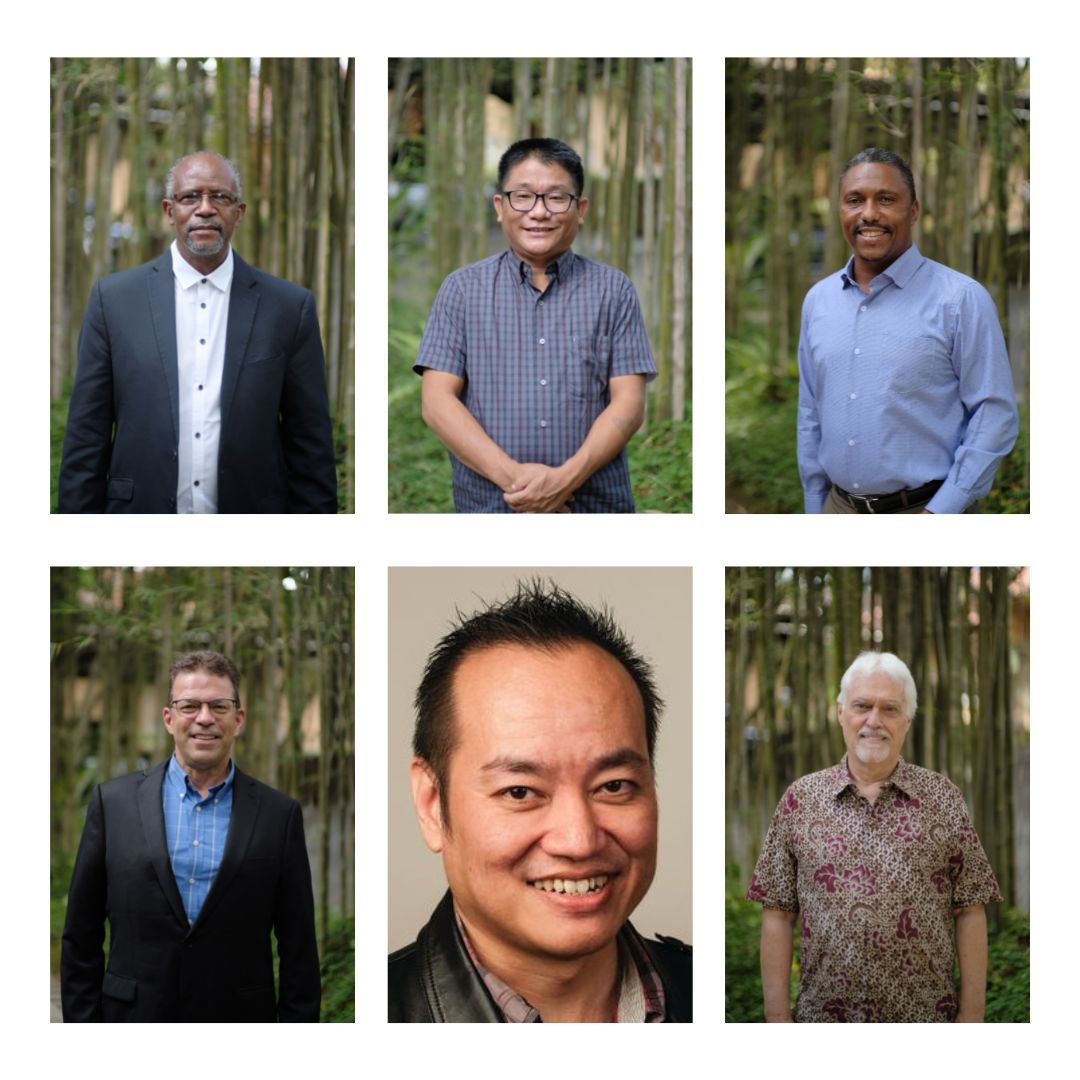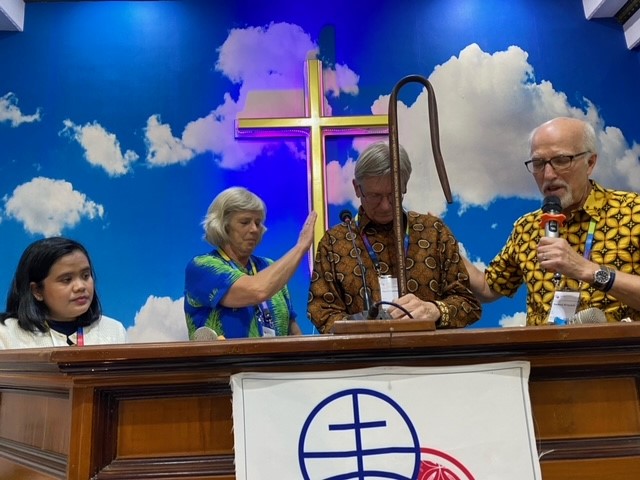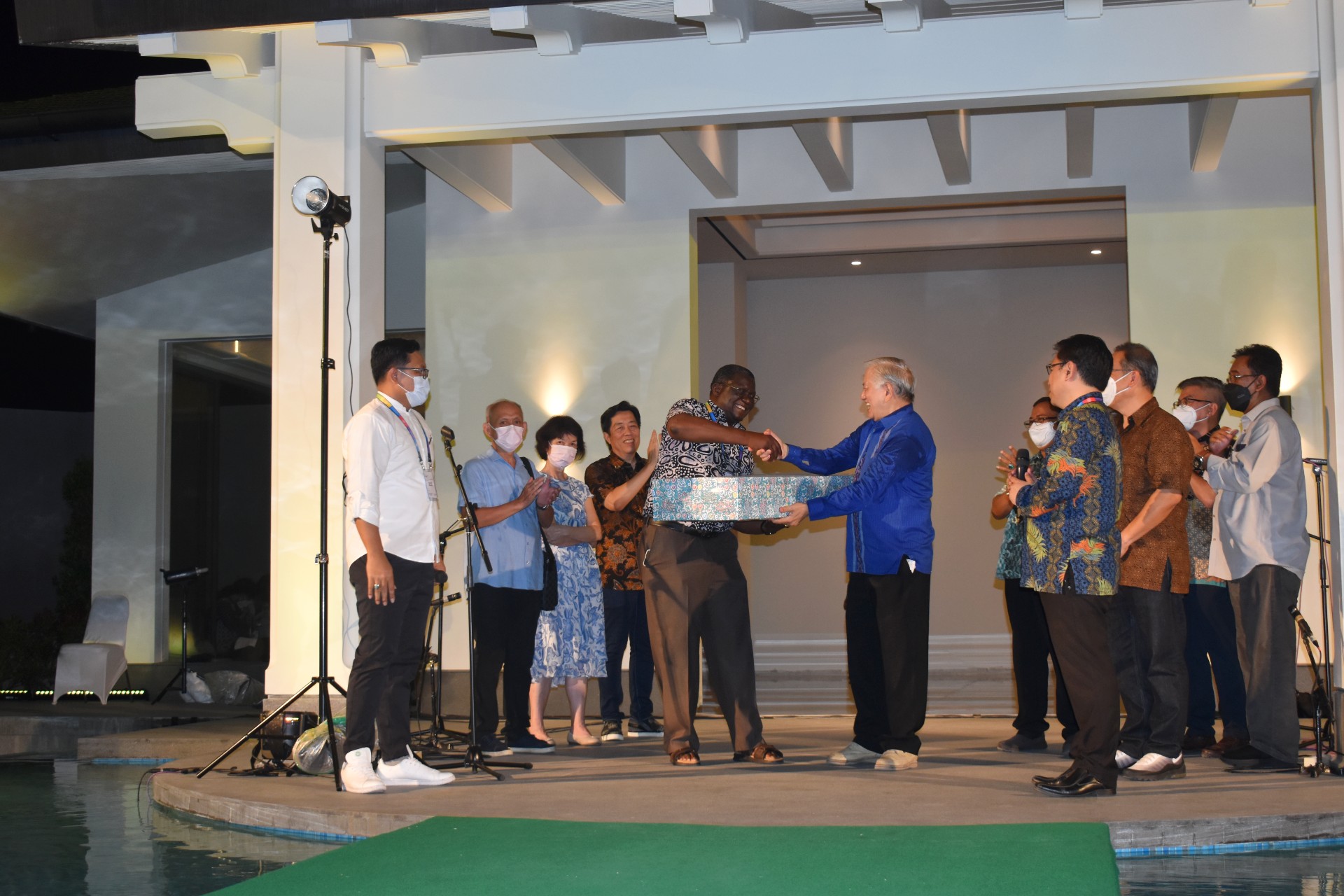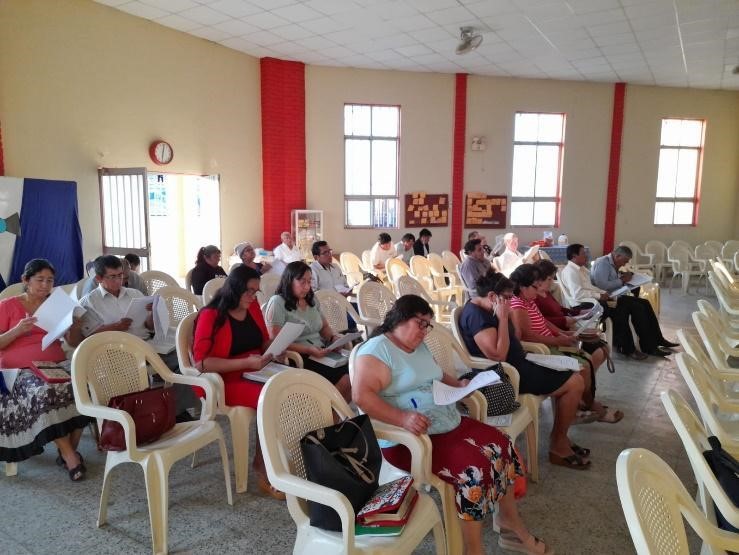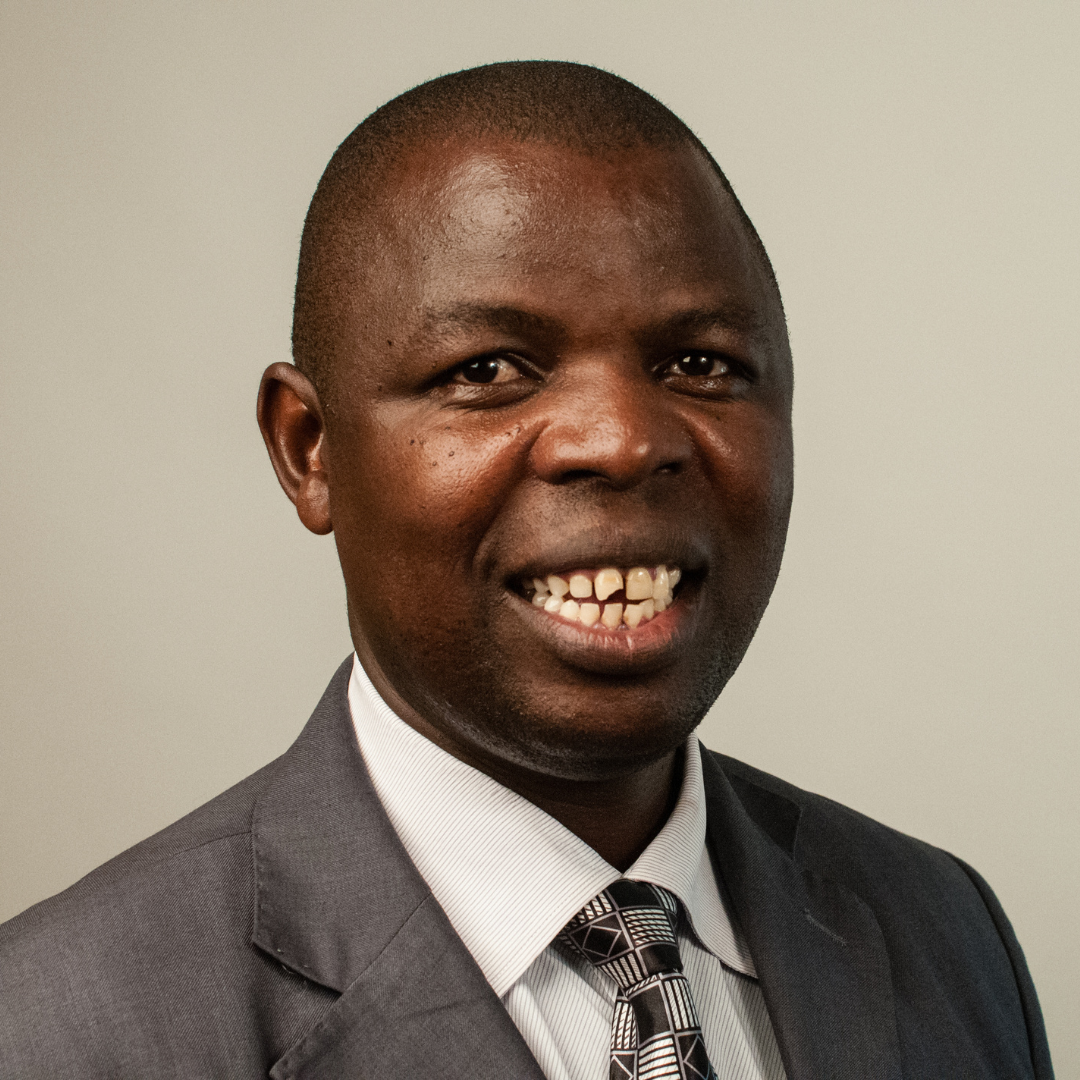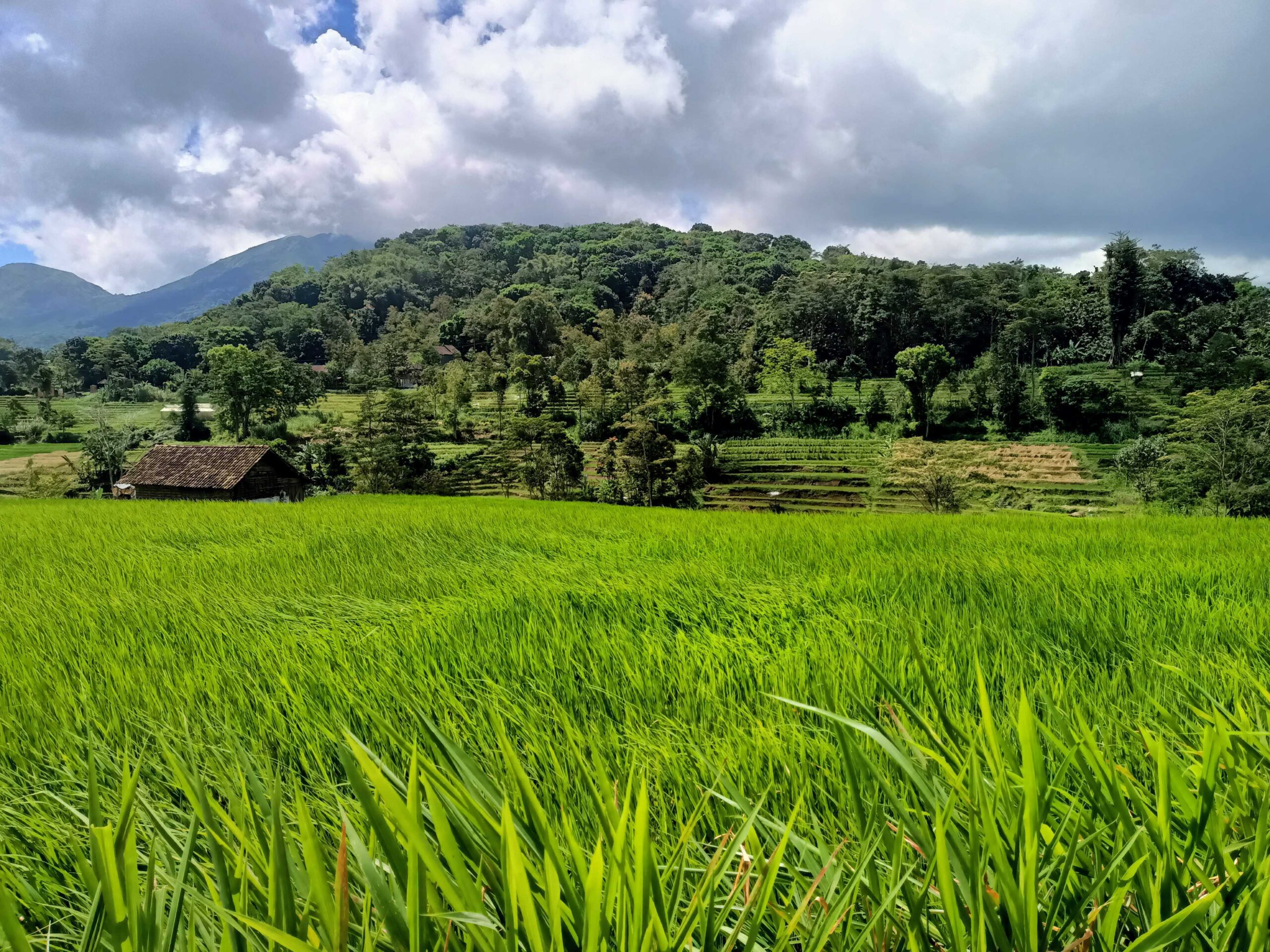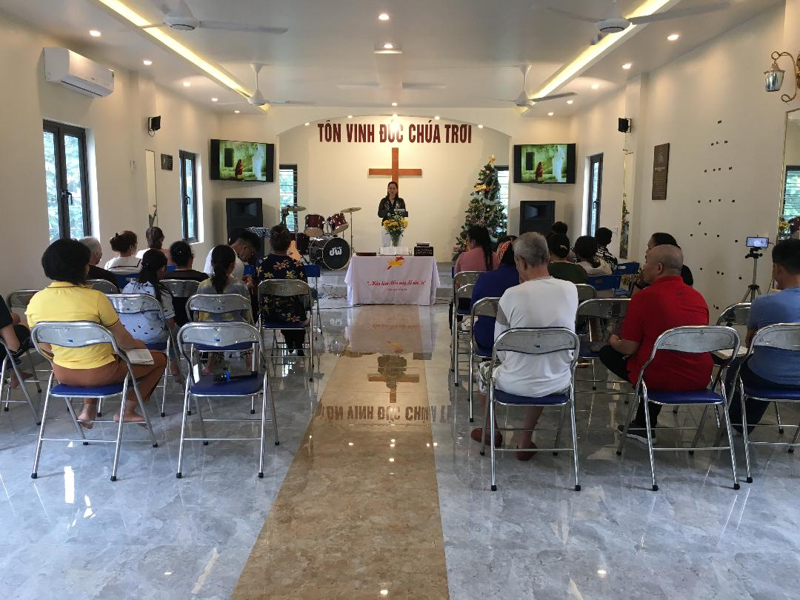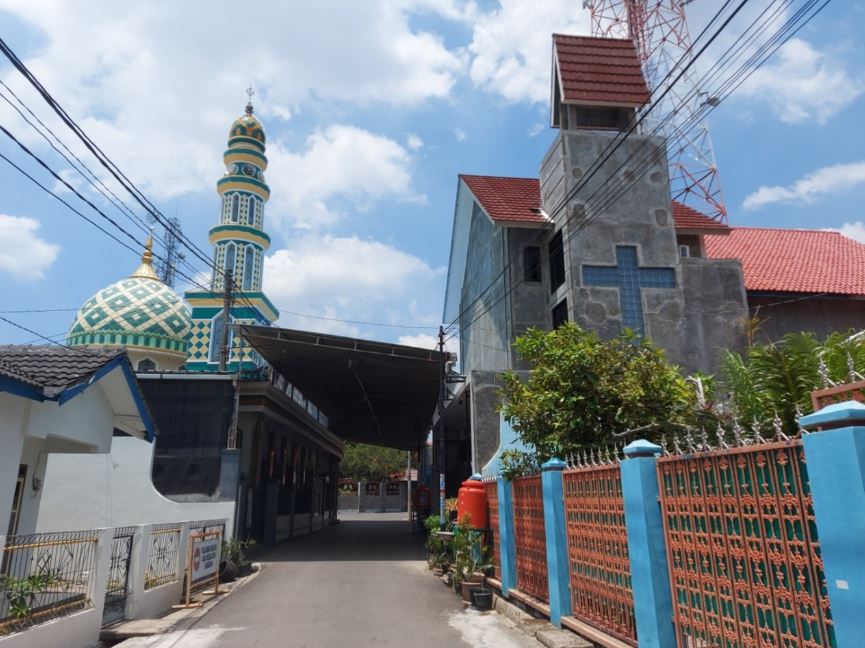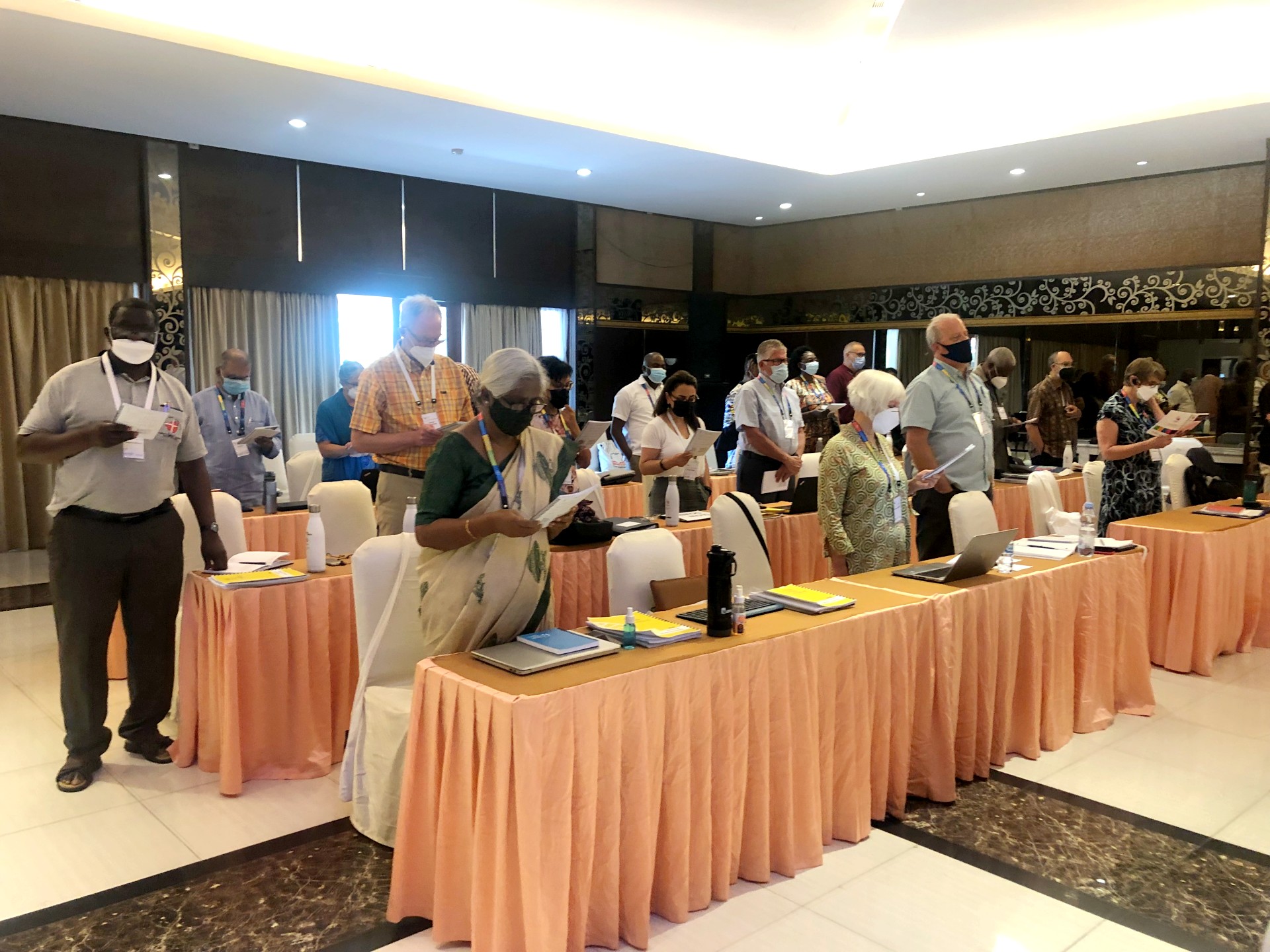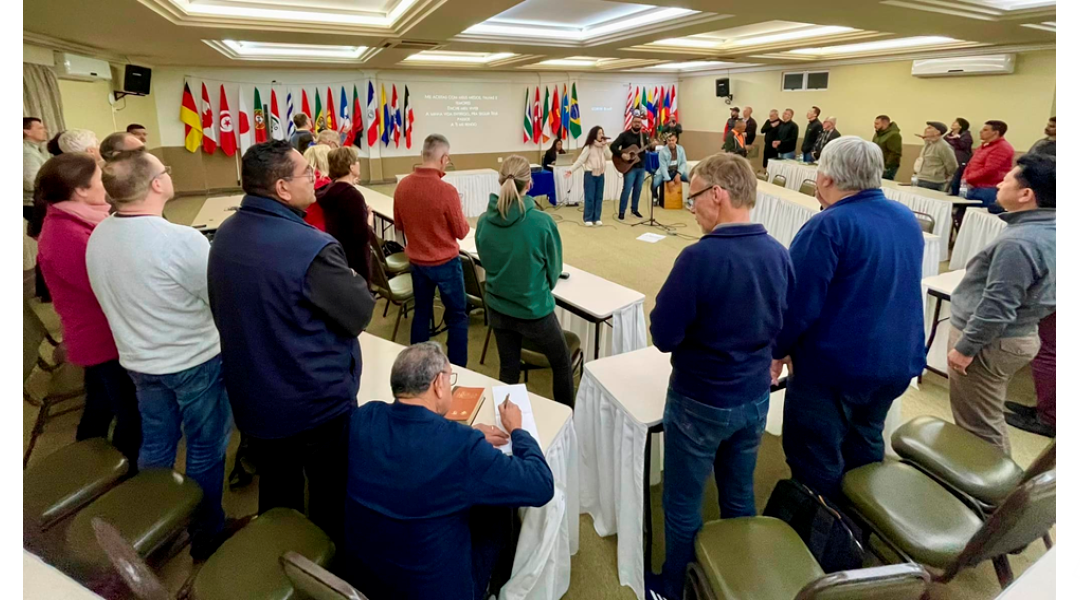-
Executive servants take up the towel
“As a worldwide community of faith in the Anabaptist tradition, people in ministry are key to Mennonite World Conference,” says César García, MWC general secretary. After Assembly 17 and associated meetings, there are new people serving this global family of churches. The General Council selected new continental representatives for the Executive Committee for 2022–2028: Sindah…
-
A new shepherd
“MWC – Continuing the work Jesus began through worship, service, mission, and evangalism” (sic). These words are inscribed upon a wooden shepherd’s staff that J. Nelson Kraybill gave to president-elect Henk Stenvers 8 July 2022 as a symbol of Mennonite World Conference servant leadership. During the Assembly 17 worship service at GITJ Margokerto, the presidency…
-
Gracious welcome on building site
The GKMI synod office is “our home together” and a “house of prayer” for GKMI congregations. The GKMI synod had a longing: to invite the MWC executive committee, Commission secretaries, regional representatives, General Council, and MWC staff to “our home” for a welcome dinner. Since the beginning of June, we were preparing for this 4…
-
Ministry partner update: ICOMB – August 2022
Introducing the Global Family: Conferencia Peruana Hermanos Menonitas – Peru ICOMB Member Conference The Peruvian Mennonite Brethren Conference has approximately 457 members and 631 attendees; it is made up of 9 established churches and a number of these have annexes. In line with the work plan of the Conference, this year visits were made to…
-
Worshipping a living and active Spirit
Germany My church journey in and out of Mennonite and Pentecostal traditions begins before I was born. Because of a thoughtless and frankly embarrassing comment from the pulpit toward her at age 15, my mother left the Mennonite church at the age of 18. She and my father raised their children in evangelical churches until…
-
Meet your Executive Committee
An Executive Committee is elected from the General Council and meets annually. Two members from each continental region are elected from the General Council; a president and vice-president are also elected by the General Council. A president-elect begins a term three years before the handover of responsibilities. The treasurer and general secretary are also members…
-
Finding new ways to respond
Resilience in the face of the pandemic When we look back at what happened in the last two years all throughout the world, one could just offer a sigh. We were never prepared for this. Being locked down for several months in the Philippines forced us to reconfigure our social life. We tend to look…
-
Living out the gospel as received
Vietnam History There are two expressions of Anabaptism in Vietnam: H·ªôi Thánh Mennonite Vi·ªát Nam (Vietnam Mennonite Church – VMC) was founded in 1964 by the Vietnam Mennonite Mission, a ministry of Eastern Mennonite Missions begun in 1957. After a time of inactivity following the change in government in 1975, it reconvened in the 1980s…
-
Assembly small but full of joy
With its national motto of “unity in diversity,” Indonesia proved a fitting host for the 17th Assembly of Mennonite World Conference – downsized by COVID-19 restrictions but full of joy, beauty and fellowship. In an outdoor venue at a Mennonite Bible college (JKI) on a mountaintop in the city of Salatiga on the island of…
-
Peace with broken pieces
The power of resilience A Peace Sunday 2022 testimony “The vessel he was making of clay was spoiled in the potter’s hand, and he reworked it into another vessel, as seemed good to him” (Jeremiah 18:4). This theme has been discussed a lot recently, especially since the pandemic, while some of us may be struggling with…
-
Shortened meetings study unity, affirm new members
General Council meeting As the Muslim call to prayer wafted on the air through open doors, the General Council worshipped, prayed, and considered the global fellowship of churches in Mennonite World Conference. The in-person triennial meetings of leaders of MWC national member churches in Indonesia 1-4 July 2022 were cut short as COVID-19 positives put…
-
Ministry partner update: ICOMB – July 2022
An unforgettable gathering of the nations After two years of virtual meetings, ICOMB hosted a face-to-face summit in May 2022, inviting close to 100 global Mennonite Brethren delegates from more than 20 countries – leaders of both established conferences and representatives of emerging conferences – to participate, along with Multiply staff and global workers, in…
